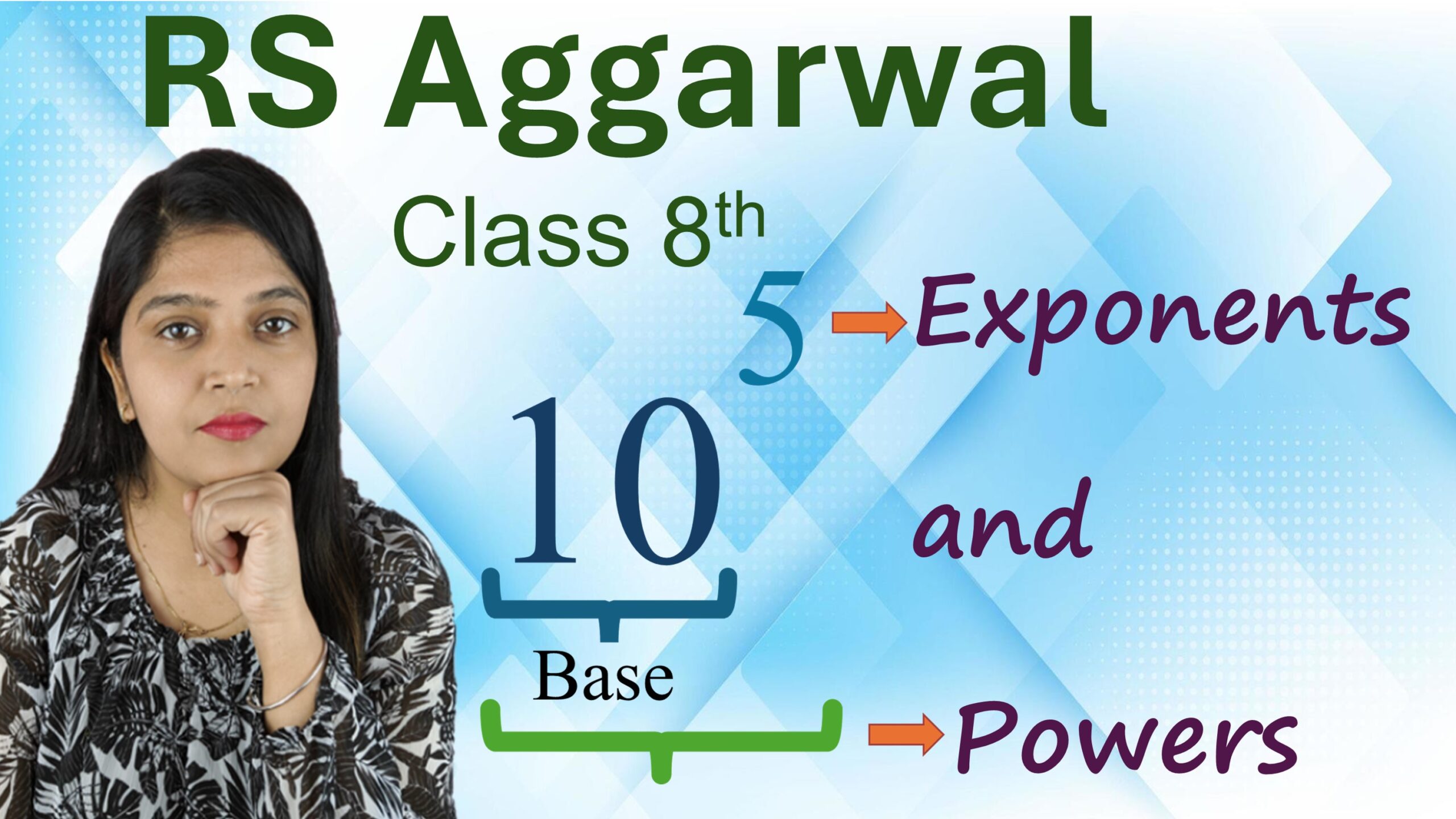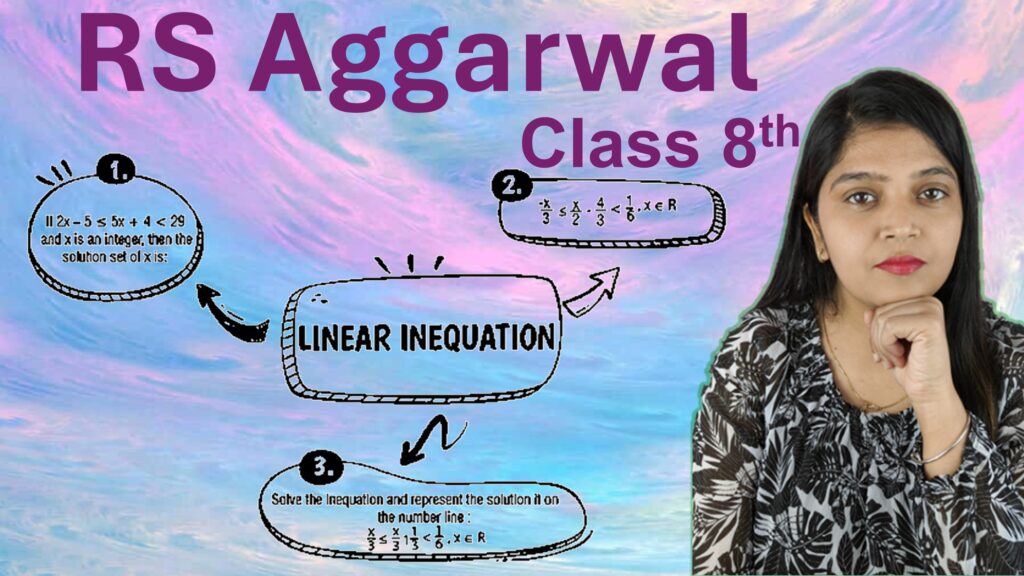Exercise: 2-B
Competency Focused Questions
Q1: When simplified, \({(x^{-1}+y^{-1})}^{-1}\) is equal to:
Solution:
We begin by simplifying \({(x^{-1}+y^{-1})}^{-1}\). First, express \(x^{-1}\) and \(y^{-1}\) as \(\frac{1}{x}\) and \(\frac{1}{y}\) respectively:
\[
{(x^{-1}+y^{-1})}^{-1} = \left(\frac{1}{x} + \frac{1}{y}\right)^{-1}
\]
Now, combine the fractions inside the parentheses:
\[
\frac{1}{x} + \frac{1}{y} = \frac{x + y}{xy}
\]
Taking the reciprocal of this expression:
\[
\left(\frac{x + y}{xy}\right)^{-1} = \frac{xy}{x + y}
\]
Thus, the simplified expression is \(\frac{xy}{x + y}\).
Answer: b. \(\frac{xy}{x + y}\)
Q2: If \(a^x = b^y = c^z\) and \(b^2 = ac\), then y equals:
Solution:
From the given relations, \(a^x = b^y = c^z\), we can express each variable in terms of the other:
\[
a^x = b^y = c^z = k \quad \text{(where \(k\) is some constant)}
\]
Thus, we have:
\[
a = k^{1/x}, \quad b = k^{1/y}, \quad c = k^{1/z}
\]
Now, using the given equation \(b^2 = ac\), we substitute the expressions for \(a\), \(b\), and \(c\):
\[
(k^{1/y})^2 = k^{1/x} \times k^{1/z}
\]
Simplifying this:
\[
k^{2/y} = k^{(1/x) + (1/z)}
\]
Equating the exponents:
\[
\frac{2}{y} = \frac{1}{x} + \frac{1}{z}
\]
Thus, solving for \(y\), we get:
\[
y = \frac{2xz}{x + z}
\]
Therefore, Answer: a. \(\frac{2xz}{x + z}\)
Q3: If \(3^0.4^5 = (18)^{10}\), the value of a is:
Solution:
First, simplify the given equation:
\[
3^{0.4^5} = 18^{10}
\]
We know that \(18 = 2 \times 9\), and \(9 = 3^2\), so:
\[
18 = 3^2 \times 2
\]
Thus:
\[
(18)^{10} = (3^2 \times 2)^{10} = 3^{20} \times 2^{10}
\]
Now compare this with \(3^{0.4^5}\), we see that \(a = 20\),
so Answer: c. 20
Q4: If \(2^{12} – 2^{10} = 3 \times 2^x\), then the value of \(x\) is:
Solution:
We begin by factoring out \(2^{10}\) from the left-hand side:
\[
2^{12} – 2^{10} = 2^{10}(2^2 – 1) = 2^{10}(4 – 1) = 3 \times 2^{10}
\]
Now, equate this with the right-hand side:
\[
3 \times 2^{10} = 3 \times 2^x
\]
Thus, we have:
\[
2^{10} = 2^x
\]
Therefore, \(x = 10\).
Answer: a. 10
Q5: The value of \(\left(7^{-1}-8^{-1}\right)^{-1}-\left(3^{-1}-4^{-1}\right)^{-1}\) is:
Solution:
We begin by simplifying each term. The first term is:
\[
\left(7^{-1} – 8^{-1}\right)^{-1} = \left(\frac{1}{7} – \frac{1}{8}\right)^{-1} = \left(\frac{8 – 7}{56}\right)^{-1} = 56
\]
The second term is:
\[
\left(3^{-1} – 4^{-1}\right)^{-1} = \left(\frac{1}{3} – \frac{1}{4}\right)^{-1} = \left(\frac{4 – 3}{12}\right)^{-1} = 12
\]
Now, subtract the second term from the first:
\[
56 – 12 = 44
\]
Answer: b. 44
Q6: The cells of bacteria doubles itself after every one hour. How many cells will there be after 8 hours?
Solution:
Since the number of cells doubles every hour, the total number of cells after \(n\) hours will be \(2^n\) times the original number of cells. Therefore, after 8 hours, the number of cells will be:
\[
2^8 \times \text{(original number of cells)}
\]
Answer: c. \(2^8\) times the original number
Q7: The value of \(2^1 – 2^{-1} + 2^1 – 2^{-1} + 2^1 – 2^{-1} + \ldots\) (up to 100 terms) is equal to:
Solution:
Each term consists of \(2^1 – 2^{-1}\), and there are 50 such terms because the total number of terms is 100. Thus, the value of each term is:
\[
2^1 – 2^{-1} = 2 – \frac{1}{2} = \frac{4}{2} – \frac{1}{2} = \frac{3}{2}
\]
Since there are 50 terms, the total sum is:
\[
50 \times \frac{3}{2} = 75
\]
Answer: d. 75






Leave a Comment